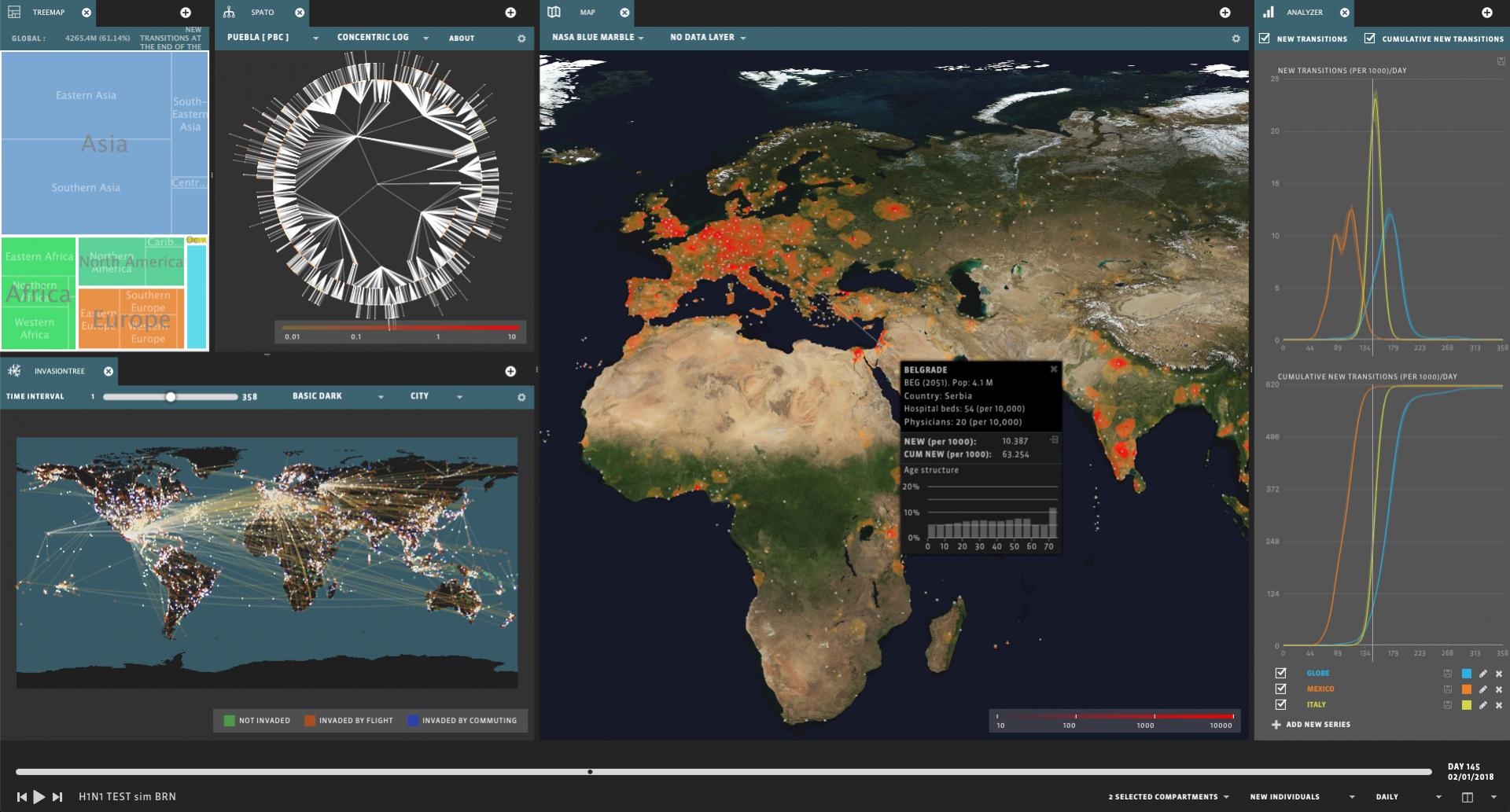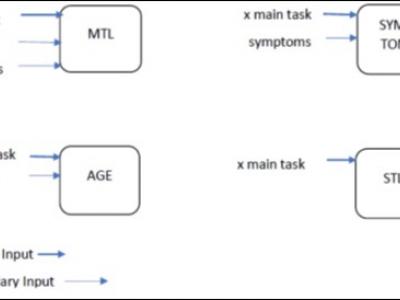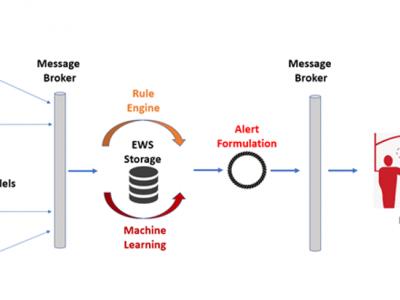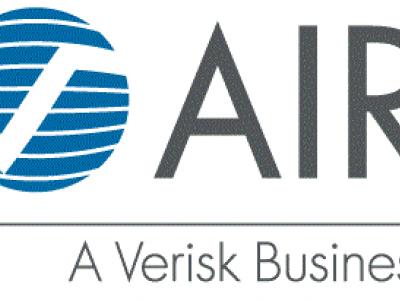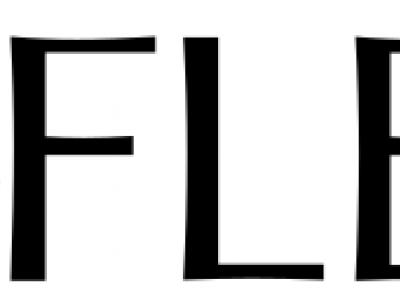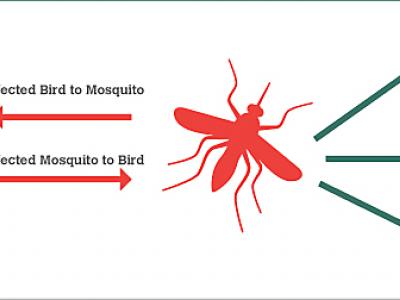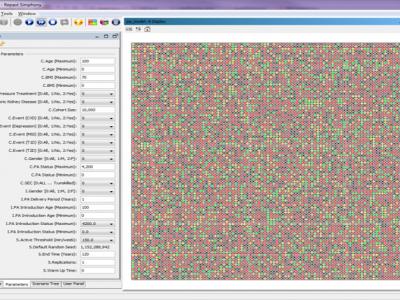Contact
Provider(s):
It is meant to be used by epidemiologists and policy makers to analyse pandemic threats, forecast their evolution, and help addressing the challenges faced in developing intervention strategies to minimise their impact, by performing analysis and estimating the efficacy of various containment measures.
GLEAM allows to simulate the spatio-temporal spreading of various infectious diseases at the global level, taking into account over 3,200 subpopulations in about 230 different countries and territories around the world, where each subpopulation is built by performing a Voronoi tessellation of the Earth’s surface around important transportation hubs. It embeds core datasets about the worldwide population density and demographic structure, flight networks and passenger distribution, daily commuting flows, and age-structured contact matrices. The epidemic dynamics within each subpopulation is defined by describing the compartmental structure of a given disease, along with the corresponding transition rates among the compartments and other relevant parameters.
The GLEAM computational is under active development since many years, being continuously extended and improved. It has been used to study different kinds of epidemic events, like the 2009 H1N1 influenza pandemic or the 2014-2016 Ebola outbreak in West Africa. The latest version of the numerical engine, which will be part of the Predictive Modelling Tools used in STAMINA, got full support for age-stratified data (including worldwide demographics, flight passenger distributions, and contact information), the ability to deal with an increased number of age groups, and a more accurate method according to which the epidemic dynamics is performed.
Supported Use Cases
Modelling the outbreak of a new COVID-19 strain in the Valencia region
 |
Portfolio of Solutions web site has been initially developed in the scope of DRIVER+ project. Today, the service is managed by AIT Austrian Institute of Technology GmbH., for the benefit of the European Management. PoS is endorsed and supported by the Disaster Competence Network Austria (DCNA) as well as by the STAMINA and TeamAware H2020 projects. |

